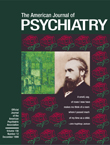Tiagabine and the Treatment of Refractory Bipolar Disorder
Ms. A was a 46-year-old woman with a 23-year history of bipolar disorder type I with rapid cycling. Her illness had been difficult to manage. She had used the following medications in varying combinations and doses: lithium carbonate, imipramine, fluoxetine, divalproex, sertraline, gabapentin, clonazepam, alprazolam, thioridazine, risperidone, olanzapine, thiothixene, lamotrigine, and quetiapine.Ms. A was taking a combination of quetiapine, lamotrigine, and alprazolam. This combination was initially effective; however, about 6 months later, she began to experience an increasing recurrence of mixed and manic symptoms. We elected to begin a trial of tiagabine. Her quetiapine therapy was discontinued and replaced with tiagabine, beginning at 1 mg/day (one-fourth of a 4-mg tablet) because she had a history of marked sensitivity to psychiatric medications. Lamotrigine and alprazolam treatment was continued. In response to the tiagabine, Ms. A commented that her mood was better than it had been in years. Her sleep was consistent, she was cognitively sharp, her energy and motivation were markedly improved, her dysphoria and anhedonia were resolved, and she could experience happiness. After 2 months of taking an average of 3 mg/day of tiagabine, she began to experience a manic episode. Restabilization was finally accomplished by increasing the tiagabine to 4 mg/day. She continued to experience benefit from tiagabine after 5 months. Her other psychiatric medications were lamotrigine (6.25 mg/day) and alprazolam (0.75 mg at bedtime) for insomnia.Ms. B was a 42-year-old woman with a 6-year history of bipolar disorder type I. Her treatment course was initially turbulent. She was treated with the following medications in varying combinations and doses: lithium, temazepam, trazodone, amitriptyline, diazepam, sertraline, bupropion, paroxetine, fluoxetine, nortriptyline, divalproex, carbamazepine, flurazepam, and gabapentin. She was stabilized with a combination of lithium, venlafaxine, and flurazepam. Although she continued this combination therapy for several years, repeated occurrences of manic symptoms required adjunctive treatment. The following adjunctive medications were used without success: clonazepam, risperidone, haloperidol, lamotrigine, thioridazine, olanzapine, primidone, and quetiapine.When Ms. B continued to experience marked recurrences of manic symptoms, we began a trial of tiagabine. Like Ms. A, Ms. B was sensitive to psychotropic drugs and was therefore started on the same low initial dose of 1 mg at bedtime. She gradually increased the dose to 4 mg at bedtime. She experienced no side effects and was able to lower her dose of flurazepam. Mood response was quite good; there was a marked reduction of manic symptoms. She took tiagabine for at least 3 months and was satisfied with the improved control of her manic symptoms. In addition to tiagabine, her other psychiatric medicines were venlafaxine (25 mg/day), lithium (300 mg/day), and flurazepam (7.5 mg at bedtime) for treatment of insomnia.
References
Information & Authors
Information
Published In
History
Authors
Metrics & Citations
Metrics
Citations
Export Citations
If you have the appropriate software installed, you can download article citation data to the citation manager of your choice. Simply select your manager software from the list below and click Download.
For more information or tips please see 'Downloading to a citation manager' in the Help menu.
There are no citations for this item
View Options
View options
PDF/ePub
View PDF/ePubGet Access
Login options
Already a subscriber? Access your subscription through your login credentials or your institution for full access to this article.
Personal login Institutional Login Open Athens loginNot a subscriber?
PsychiatryOnline subscription options offer access to the DSM-5-TR® library, books, journals, CME, and patient resources. This all-in-one virtual library provides psychiatrists and mental health professionals with key resources for diagnosis, treatment, research, and professional development.
Need more help? PsychiatryOnline Customer Service may be reached by emailing [email protected] or by calling 800-368-5777 (in the U.S.) or 703-907-7322 (outside the U.S.).

